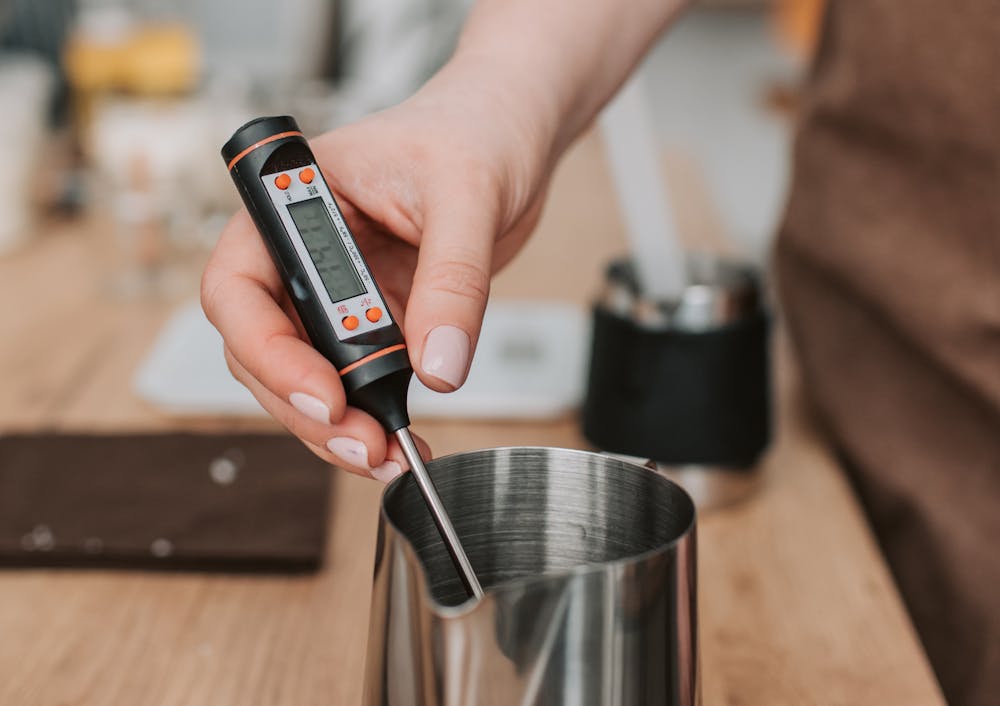Cooking meat to perfection can be a challenging task, but having the right tools can make all the difference. One essential tool in every kitchen is a meat thermometer. With so many options available, choosing the right meat thermometer can be daunting.
This guide will help you understand the different types of meat thermometers and how to choose the best one for your culinary needs.
Why use Meat Thermometer?
First of all, using a meat thermometer is the only precise way to determine if your meat is cooked properly. It ensures you reach the safe internal temperature needed to kill harmful bacteria, keeping your meals safe to eat.
Plus, it guarantees your meat is cooked to your preferred doneness, whether that’s rare, medium, or well-done. This precision not only enhances food safety but also boosts your confidence in the kitchen, making your cooking more consistent and enjoyable.
Once you start using a meat thermometer, you’ll wonder how you ever managed without it!
Types of Meat Thermometers
1. Instant-Read Meat Thermometers
Digital instant-read meat thermometers are popular for their speed and accuracy. These thermometers provide a quick reading, usually within 5 to 10 seconds, making them ideal for checking the temperature of meat without keeping the oven door open for too long.
Pros:
- Quick and accurate readings
- Easy to use
- Suitable for a variety of meats
Cons:
- Not suitable for leaving in the meat while cooking
2. Wireless Meat Thermometers
Wireless meat thermometers are the latest innovation in cooking technology. These thermometers use Bluetooth or Wi-Fi to transmit temperature data to a smartphone or other device, allowing you to monitor the cooking process from a distance.
Pros:
- Convenient and flexible
- Allows remote monitoring
- Can often monitor multiple meats simultaneously
Cons:
- Requires pairing with a smart device
- More expensive than traditional thermometers
3. Dial Oven-Safe Thermometers
Dial oven-safe thermometers can be left in the meat while it cooks, providing a continuous reading of the temperature. These thermometers are often used for larger cuts of meat like roasts and turkeys.
Pros:
- Can be left in the meat during cooking
- Durable and easy to read
Cons:
- Slower to register temperature changes
- Less accurate than digital thermometers
4. Digital Probe Thermometers
Digital probe thermometers come with a probe that can be inserted into the meat and left in while cooking. The probe is connected to a digital display outside the oven, allowing you to monitor the temperature without opening the oven door.
Pros:
- Continuous monitoring
- Accurate and reliable
- Some models have alarms to alert you when the meat reaches the desired temperature
Cons:
- Wires can be cumbersome
- More expensive than basic models
How to Choose the Right Meat Thermometer
When choosing a meat thermometer, consider the following factors:
1. Type of Cooking
Consider the type of cooking you do most frequently. If you roast or grill large cuts of meat, a probe thermometer or wireless meat thermometer might be the best choice. For quick temperature checks, an instant-read thermometer is ideal.
2. Accuracy
Accuracy is crucial when it comes to meat thermometers. Look for models with a high level of accuracy to ensure your meat is cooked to perfection.
3. Ease of Use
Choose a meat thermometer that is easy to use and read. Digital displays are typically more user-friendly than analog ones, and wireless models offer the convenience of remote monitoring.
4. Durability
Invest in a durable meat thermometer that can withstand high temperatures and frequent use. Stainless steel probes and sturdy casings are indicators of good quality.
5. Additional Features
Consider additional features such as multiple probes, temperature alerts, and app connectivity. These features can enhance your cooking experience and provide greater flexibility and control.
Conclusion
Choosing the right meat thermometer depends on your specific needs and cooking habits. While digital instant-read and probe thermometers are great options, a wireless meat thermometer offers unmatched convenience, accuracy, and flexibility. By investing in a high-quality wireless meat thermometer, you can ensure perfectly cooked meat every time, making your culinary endeavors more enjoyable and successful.





